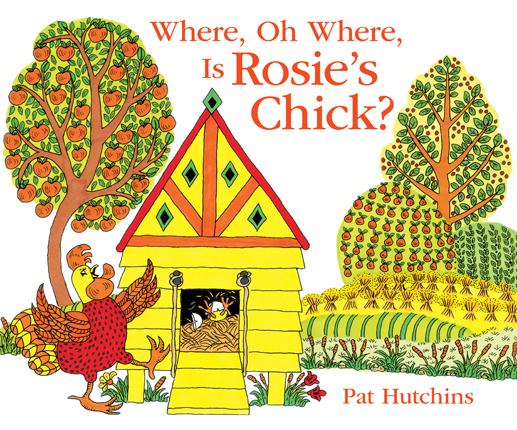Full Text Reviews: School Library Journal - 07/01/2016 PreS-Gr 1—When Rosie the hen finally hatches an egg, she cannot find her baby chick. She looks everywhere, and all the while, her chick is looking for her—sort of. Baby chick is still wearing half of his shell over his head and walking around blindly. Rosie does not even recognize him, but an unfriendly fox does and begins following close behind. The captivating illustrations are like a bright quilt of colors and patterns, with humor tucked in for observant readers. The text alone is not sufficient to tell this easy story. Readers will see the dangers and want to warn the chick and try to convince Rosie to turn around to find her baby. But all ends well. This would be a great choice for sharing during the changing seasons. VERDICT A charming sequel to the classic Rosie's Walk and an appealing read-aloud for all collections.—Mary Hazelton, formerly at Warren & Waldoboro Elementary Schools, ME - Copyright 2016 Publishers Weekly, Library Journal and/or School Library Journal used with permission. Bulletin for the Center... - 09/01/2016 In this sequel to the classic Rosie’s Walk, Rosie, the lovable but unobservant hen, has laid an egg that has just hatched-but where is her chick? She searches for it, following a formula similar to the previous title: she looks “under the henhouse,” “behind the wheelbarrow,” and so on but can’t find her baby. What viewers will quickly realize is that her chick, top half covered by an eggshell, is blindly following behind her, and every move that the clueless Rosie makes thwarts various predators who lurk along the way: a toothy fish is gagged mid-leap, for example, by an apple dislodged from the wheelbarrow by Rosie’s scrabbling feet. When the other hens and chicks finally clue Rosie into her chick’s whereabouts (“BEHIND YOU!”) the pair happily celebrate their reunion by going for a walk, in a nod to the first title. This is a diverting outing, and adults and children who are fond of Rosie will especially enjoy this companion piece. The text here is lengthier than in the first story but still within reach of many early readers, due to the simple vocabulary and the repetition of words and phrases. Hutchins utilizes a palette of scarlets, yellows, and greens to give Rosie’s adventures a visual pop, and stylized details and patterns add texture and interest to the figures and backgrounds. The ways in which Rosie’s actions foil the cat, fish, and fox that stalk her chick add to the mischievous, slapstick tone. Besides the obvious partnering with Rosie’s Walk, this could also work well in a readaloud session paired with Tafuri’s similarly-themed Have You Seen My Duckling? JH - Copyright 2016 The Board of Trustees of the University of Illinois. Booklist - 07/01/2016 In this long-awaited companion to 1968’s Rosie’s Walk, Hutchins’ oblivious hen is back, this time looking for her newborn chick. While Rosie has a hard time finding the chick, readers (and a crafty fox who’s up to no good) will locate it with ease as the chick struggles on every page to get unstuck from its shell. Hutchins’ use of bright yellows, reds, and greens adds energy and warmth to this simple story. The patterned woodcut-style designs pair well with the measured, repetitious text, while Rosie’s movements through the farm are emphasized by slow changes in the landscape; buildings and wheelbarrows move from right to left, eventually disappearing off the page altogether. The chick, meanwhile, travels from left to right, often just one step ahead of danger (in the form of a cat, a fish, a fox, a wobbly ladder, a tree branch, and a haystack), but getting closer to its mother as it does. Lots of action, combined with a very happy ending, makes for a satisfying journey. - Copyright 2016 Booklist. Loading...
|



